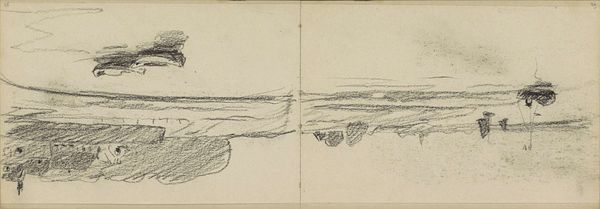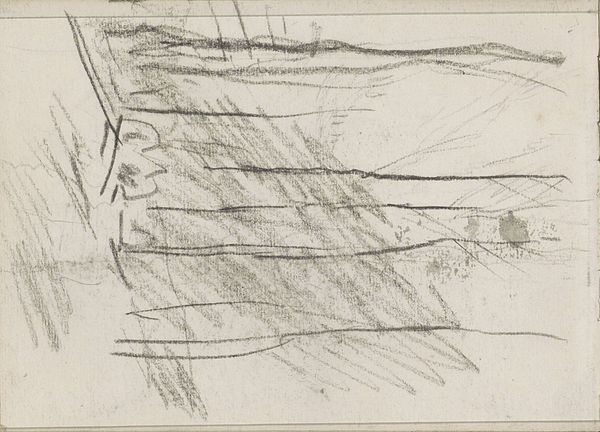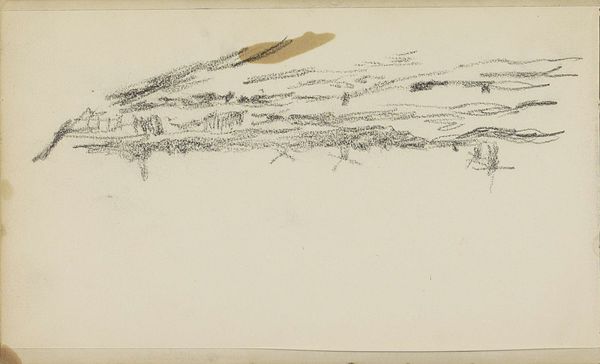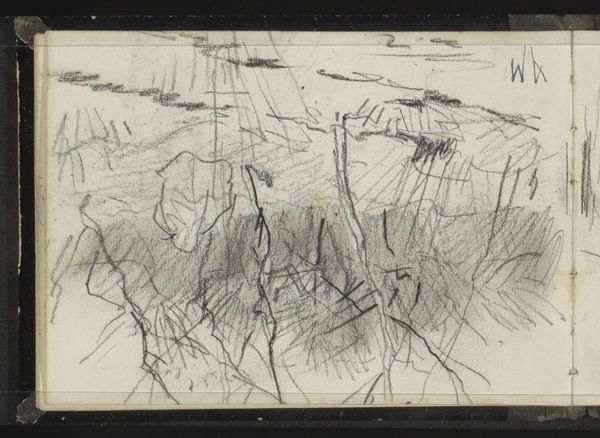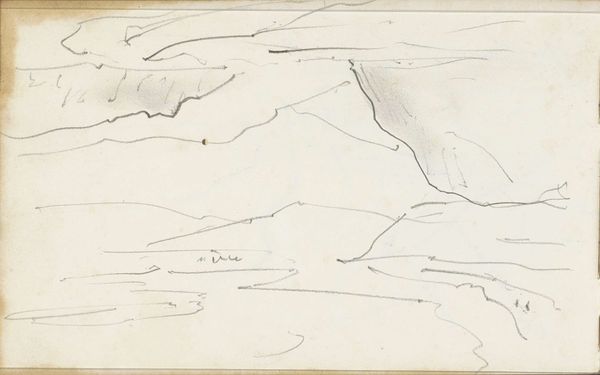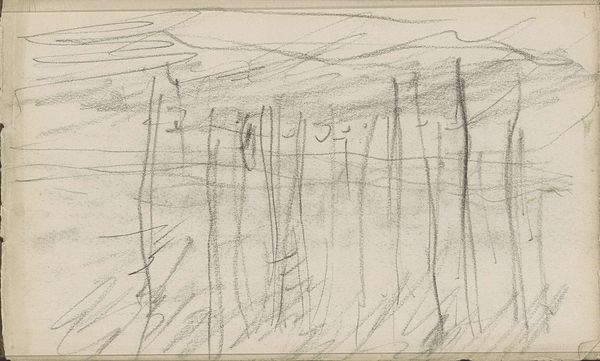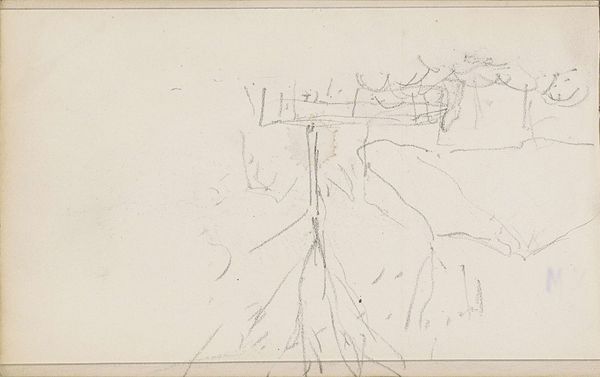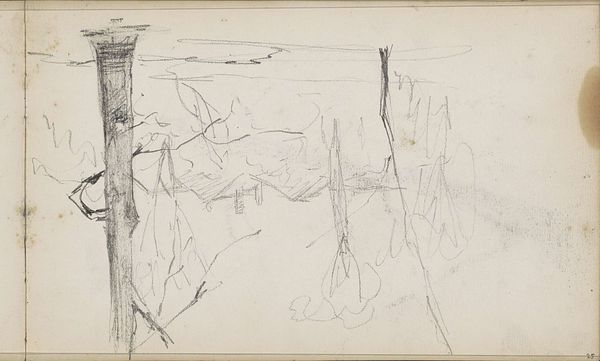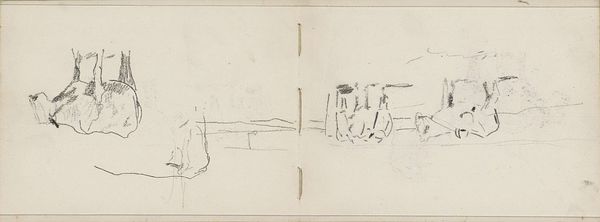
drawing, pencil
#
drawing
#
quirky sketch
#
dutch-golden-age
#
pen sketch
#
sketch book
#
landscape
#
personal sketchbook
#
idea generation sketch
#
sketchwork
#
pen-ink sketch
#
pencil
#
sketchbook drawing
#
genre-painting
#
storyboard and sketchbook work
#
sketchbook art
#
realism
Copyright: Rijks Museum: Open Domain
Curator: Ah, to come across this intimate sketch! This is "Liggende en staande koe in een weiland" ("Lying and Standing Cow in a Meadow") by Anton Mauve, likely dating between 1848 and 1888. It's a pencil drawing, probably done en plein air, capturing a fleeting moment in the Dutch countryside. Editor: My first impression is tranquility. It's just so… simple. You can almost hear the quiet rustle of grass, the distant lowing. The cows seem so unbothered by everything. It's the ultimate chill. Curator: Absolutely! And what seems so straightforward belies a deeper connection to artistic and societal currents. Mauve was a significant figure in the Hague School, part of a movement consciously reacting against academic romanticism, embracing a more realistic and intimate portrayal of Dutch life and landscape. Editor: It feels very… un-grand, if that makes sense. There’s no pretense here. The artist isn't trying to impress anyone with skill but inviting us into their most direct experience of witnessing these creatures. It's almost like eavesdropping on Mauve's creative process. I feel like I shouldn’t even be looking at it! Curator: Precisely! The loose, suggestive lines indicate a working sketch rather than a finished presentation piece. Yet, this immediacy became central to the aesthetic value system being formulated within these realist circles. Representing modern life meant capturing its transient, ephemeral nature. Think of the influence this had on Impressionism. Editor: I suppose. But for me, this transcends art history. It is evocative of the raw connection between humanity and nature before concrete took over and cities grew bigger. There is something fundamentally soothing in that simplicity. Curator: You touch on an essential point. Beyond art-historical classifications, a work like this offers a pathway towards re-centering values within a culture perpetually accelerating away from this mode of observation. Editor: Exactly. Seeing art in such a state of gestation kind of takes away the preciousness we often attribute to it. This suggests an alternative story. The story is: let’s start from an immediate feeling. It is all right to do something imperfectly if your intention is true. Curator: That perfectly captures its essence: a call toward feeling and intentional observation, where the final outcome always serves as merely a footnote to the entire endeavor.
Comments
No comments
Be the first to comment and join the conversation on the ultimate creative platform.
